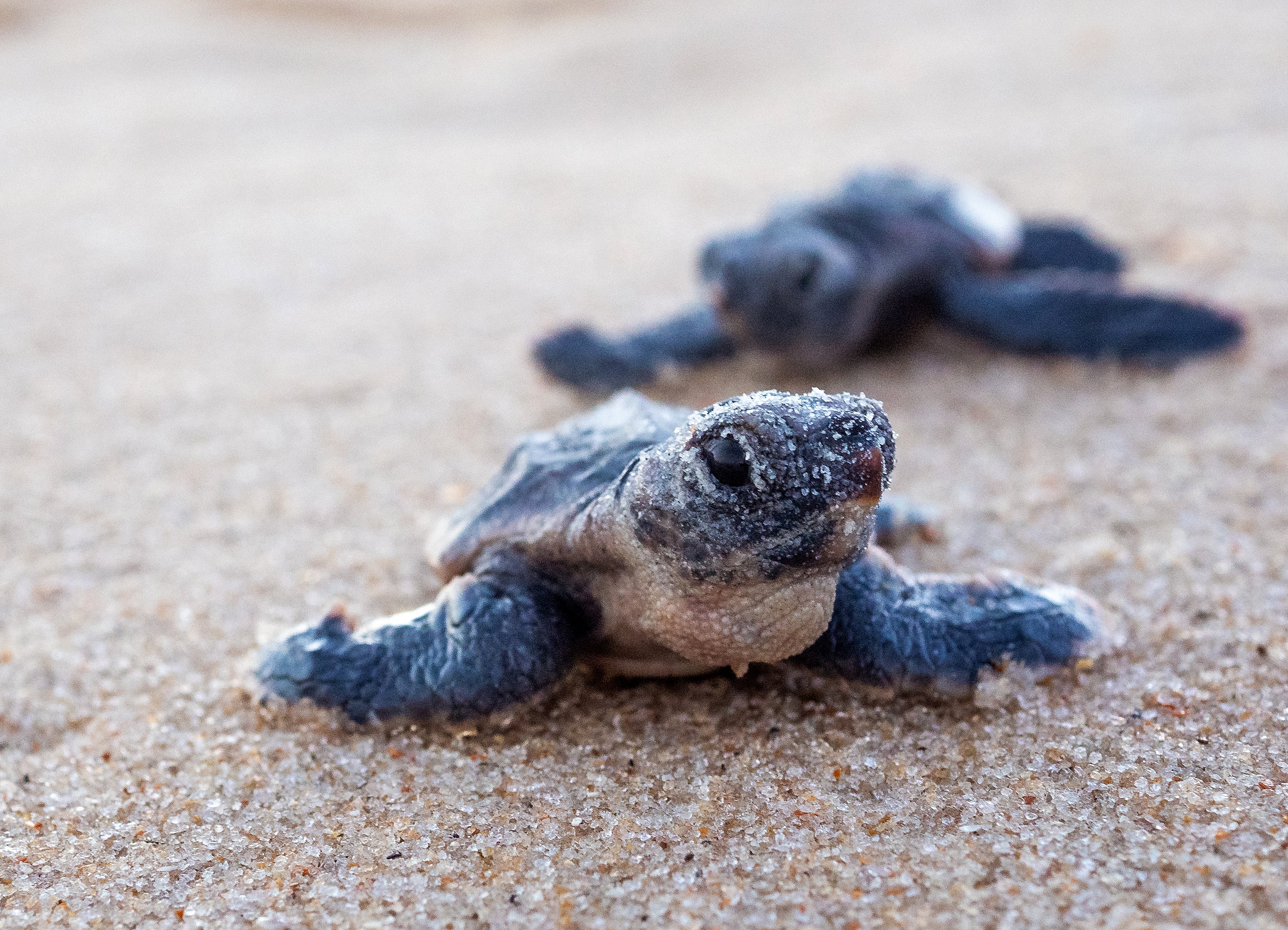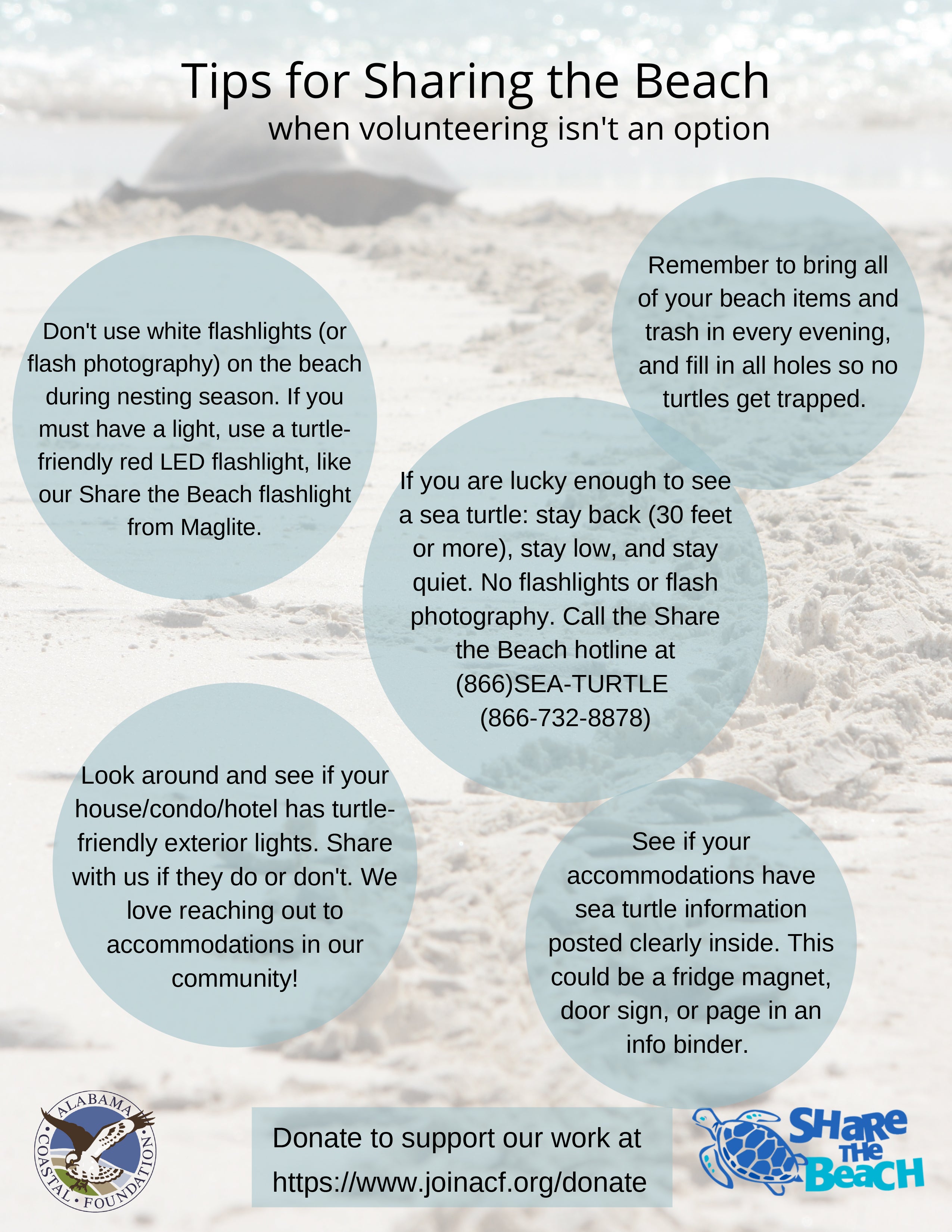By DAVID RAINER, Alabama Department of Conservation and Natural Resources
For those who love sea turtles, and who doesn’t, training to be a volunteer for the Share the Beach initiative is coming up later this month. The training session for Dauphin Island is set for 6 p.m. March 21 at the Shelby Auditorium at Dauphin Island Sea Lab, while the training meeting at Gulf Shores is scheduled for 6 p.m. March 23 at Erie Meyer Civic Center.
Sara Johnson, Share the Beach Director, said the volunteer training meetings are used to teach people how to become a volunteer and what can be expected from those who commit to the program. The volunteer recruitment is only open briefly before teams are organized and trained for the monitoring season, which starts on May 1.
Share the Beach was formed in 2005 by the Friends of the Bon Secour Wildlife Refuge in Gulf Shores. In 2018, the Bon Secour group asked the Alabama Coastal Foundation (ACF) to oversee the program, abiding by protocols set by the U.S. Fish and Wildlife Service under the federal endangered species recovery permit, which allows volunteers to help protect the nesting sea turtles and their habitat.
That same year, the Alabama Department of Conservation and Natural Resources (ADCNR) and the Natural Resources Damage Assessment Alabama Trustee Implementation Group provided the program $1,000,000, distributed over 3 years. Conservation Commissioner Chris Blankenship is the Lead Trustee for Alabama. The funding allows the continued operation, expansion, and enhancement of Alabama’s Share the Beach program by educating the public about the conservation of sea turtles in the wild and by identifying and helping to minimize human threats. The funding also improves the effectiveness and efficiency of sea turtle nesting data collection. These data are made available to local governments, the state, and U.S. Fish and Wildlife Service (USFWS) to support their work in actively reducing threats to nesting sea turtles, nests, and hatchlings. This funding helps ensure the Alabama program operates on a similar level with other programs throughout the southeastern United States and increases Alabama’s contribution to overall efforts to support sea turtle restoration in the Gulf of Mexico.
The sea turtles, which have estimated lifespans of 50 to 100 years, utilize Alabama’s coastline to start nesting activity in May and finish in August, according to Johnson
“We monitor through October 31,” she said. “Any eggs laid in late August will incubate into October. The incubation period averages 55 to 60 days.”
The Southeast Regional Sea Turtle Meeting was held recently at Perdido Beach Resort in Orange Beach, and I hung out with a large group of sea turtle biologists after a day of meetings. One of the presenters, Matt Ware, performed research for his doctorate from Florida State by monitoring nesting activity on the Fort Morgan peninsula.









